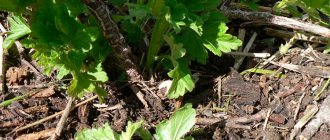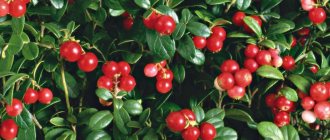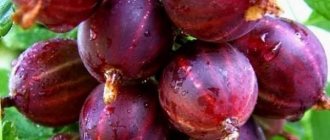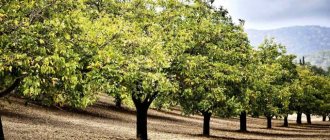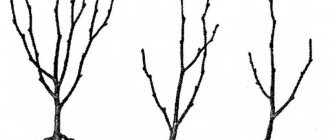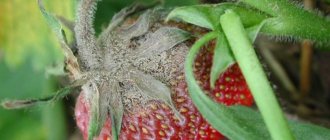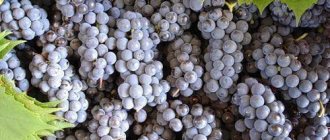Gooseberry Prune is a unique variety of spreading, vigorous gooseberry, bred in 1992 by Russian breeder K. D. Sergeeva. The variety was obtained by crossing the Plum variety and its hybrid form Plum 259–23. It was officially registered the same year and quickly gained popularity.
The advantage of the Prune gooseberry (reviews from experts and gardeners confirm this) is its high frost resistance, as well as resistance to fungal diseases. In this article we will tell you about this unusual variety, its characteristics and the secrets of proper cultivation. We hope that this information will be useful to everyone who decides to grow it on their site.
Fruit
The berries are medium in size, weighing on average 4–5 grams, oval-shaped, sometimes pear-shaped. The skin is rich in color, from bright red to dark purple, almost black. It is dense with a slight bluish tinge. The flesh is dark red. Prune gooseberries have an excellent taste - they are very sweet (sugar content up to 10.6%), with an unusual plum aroma and taste.
It is worth noting the beneficial properties of this variety. Traditional healers use berries to treat vitamin deficiencies, anemia, digestive disorders and other diseases. The dense peel allows the berries to be preserved for a long time; they are easily transported over long distances. The author of the variety recommends Prune gooseberries for universal use - the berries are very useful when eaten fresh, adding an original taste to jams, fruit drinks, juices, tinctures and wines.
The variety is frost-resistant, but prefers not very frosty winters, as well as not too hot summer months. At a soil temperature of +1°C, the root system is in an active state. It dies when the temperature drops to -3°C.
Features of the variety include:
- faint, almost invisible spines;
- resistance to infection by powdery mildew and spheroteca;
- high productivity, increasing every year;
- propagation by both cuttings and seedlings;
- drought and frost resistance;
- presence of a period of rest.
Advantages and disadvantages of the variety
Among the advantages of the variety they note:
- small, compact bushes;
- good yield indicators;
- high taste of berries;
- unpretentiousness in care and cultivation;
- frost resistance;
- adaptability to unfavorable conditions;
- self-pollinating;
- small number of thorns;
- versatility of application.
The disadvantages are the variety of sizes of berries (3-5 g) and gradual ripening, which excludes one-time harvesting.
Choosing a landing site
A description of the Prune gooseberry today can be found in all gardening reference books. All sources position it as a light-loving plant. It does not tolerate even partial shade, so it cannot be planted in the garden between trees. If you do not have the opportunity to plant bushes in an open and well-lit area, then plant them along the fence at a distance of one and a half meters from it.
Prune gooseberry does not tolerate excessive soil moisture; in such conditions it often gets sick. For this reason, try to avoid low-lying areas, especially if they are close to groundwater.
Landing
Young seedlings of the Prune gooseberry are planted in the fall, at the end of September. This time is favorable for planting, since the plants take root before the onset of frost, and next spring their vegetative process is already activated.
The soil for this variety should be well-drained and fertile, neutral acidity. If the soil on your site is clayey, add coarse sand and peat to it, before planting, add organic fertilizers (0.5 buckets of compost or humus) and 20 g of potassium mixture or a handful of ash to the planting mixture.
Prune gooseberries are planted in standard holes - 50x40x45 cm. Fertilizers are mixed with part of the soil and poured into the hole in a mound. A seedling is placed on it so that the root collar, after being covered with soil, is six centimeters below the ground level. The roots must be spread well and covered with soil. To avoid voids in the soil, each layer of soil mixture must be watered. At the end of planting, the shoots are pruned to 4–5 buds. The seedling is hilled up and the tree trunk circle is covered with a thick layer of mulch. For this you can use sawdust and peat, dry humus.
To make seedlings take root easier and faster, soak the roots of the plants a day before planting in any stimulating composition (Barrier, sodium humate, Ideal) in accordance with the instructions. The survival rate and development of shrubs is influenced by the plants that previously grew in the area where the gooseberries are planted. It cannot be planted after currants and raspberries. These crops significantly deplete the soil. In addition, they have common diseases and pests with gooseberries, which can lead to various diseases and even death of the plant.
How to care
As we said, at its core, the Prune variety is an unpretentious gooseberry variety. It is enough to carry out a number of standard actions related to caring for the plant.
We install supports. When the bush begins to grow and expand rapidly, it simply needs to install supports. The support can be made of various materials. The main thing is that they can support the bush. Keep the branches off the ground to prevent the berries from rotting.
We apply fertilizers. For the variety you need to fertilize 3 times. Before flowering, it is necessary to add potassium humate or urea. Take 4-5 tbsp. l. and diluted in 20 liters of water.
After flowering ends, potassium humate is added. Liquid organic fertilizers are also added. Take 4 tbsp. l. potassium humate, diluted in 20 liters of water. Or you can use a diluted organic compound.
When the fruits begin to form, you need to add liquid organic matter and wood ash. Wood ash must be added to the tree trunk circle. And water the top using a pre-prepared organic solution.
2 years after planting the plant, it is necessary to apply a complex fertilizer that contains the necessary important nutrients. Throughout the season, you can add slurry or bird droppings (1:20).
We prune the bush. The main harvest begins with 2-3 year old gooseberry bushes. It is for this reason that with the onset of spring it is necessary to prune old, damaged branches.
This will help you increase your yield. You will also thin out the crown, thereby providing the bush with additional light and air. The appearance of the bush will also change. It will become more compact.
Reproduction methods. The variety can be propagated using layering (horizontal, arched and vertical). And also using the cutting method. Both methods help well to propagate the bush and have long been used by many summer residents.
We prepare the bush for the winter period. Only young, fragile bushes need to be covered with a special covering material. An adult bush should also be covered in case the winter has little snow. The young bush must be completely covered.
As for the adult, its branches must be bent to the ground and the roots must be hilled. But due to the fact that the variety tolerates winter frosts well, many summer residents do not use shelter and leave the bush in its usual form.
Diseases and insects.
The bush can become infected immediately with the onset of spring. In order to avoid infection with these diseases, you must adhere to the following rules:
- Remove plant residues.
- In spring and autumn, dig up the soil.
- Before the buds bloom, it is necessary to treat the bush with Bordeaux mixture.
- Before sap flow begins, it is necessary to water with hot water, approximately 90 degrees.
Gooseberries can be attacked by aphids, gooseberry sawflies, and moths. If the infestation is still small, the infected parts must be cut off. And then spray with an ash solution with the addition of laundry soap.
If the area of infection is already large, then it is impossible to do without the use of special drugs. You need to carefully study the instructions in order to process the bushes correctly, possibly several times.
If you decide to purchase Prune gooseberry variety, then you have made the right choice. Reviews from gardeners who grow Prune gooseberries are overwhelmingly positive. Black berries are ideal for making various juices, compotes, jams and jams. The berries have wonderful taste and external characteristics.
Gooseberry diseases
Resistant to powdery mildew and fungal diseases, Prune gooseberry is susceptible to anthracnose and goblet rust. The latter is manifested by orange-brown pads appearing on the leaves, and anthracnose - by numerous small, but rapidly increasing brown spots. When the first signs of this disease appear, the plant is treated with insecticides containing copper, for example, copper sulfate and Bordeaux mixture. If the damage is severe, the branches must be removed and burned.
It is necessary to keep the beds and tree trunks clean, free of weeds and plant debris. According to many gardeners, it is very effective to water the gooseberries with boiling water, or rather hot water (80–90°C), in early spring before the buds open. This will destroy pest larvae and fungal spores that overwinter on the plant and in the soil. After watering the plant with boiling water, the tree trunk circle should be covered with film and the covering should not be removed until mid-June. This will delay the flight of moths, moths, and gooseberry sawflies living in the ground.
When aphids, currant borers or glass borers appear on the shoots, it is necessary to use a solution of laundry soap with ash.
Photo of a bush
When choosing a variety, gardeners take into account the possibility of obtaining returns in different planting regions. The photo shows gooseberries of the Prune plum variety during the fruiting period.
The dark-colored berries stand out in contrast against the background of green foliage. After they ripen, the vertical stems may bend toward the ground under the weight of the fruit.
We recommend checking out Gooseberry White Nights
